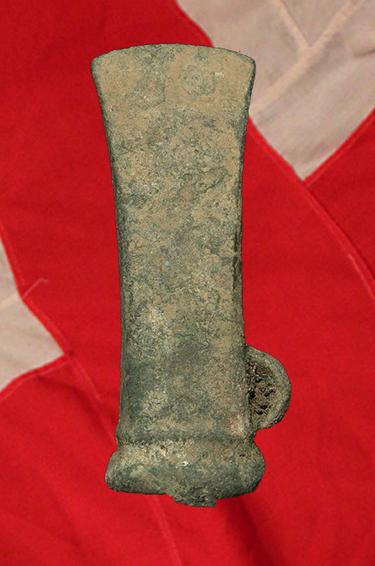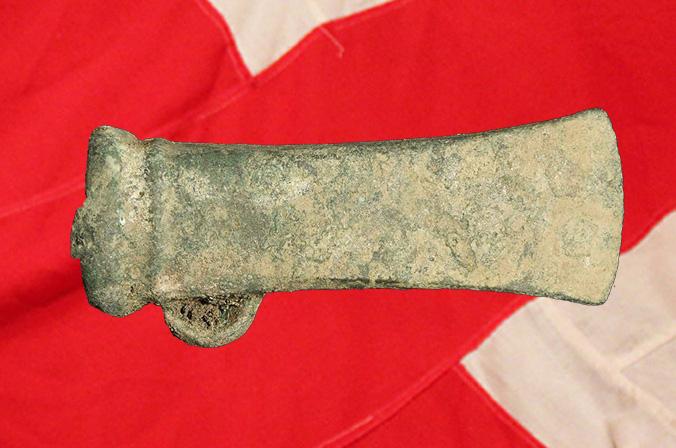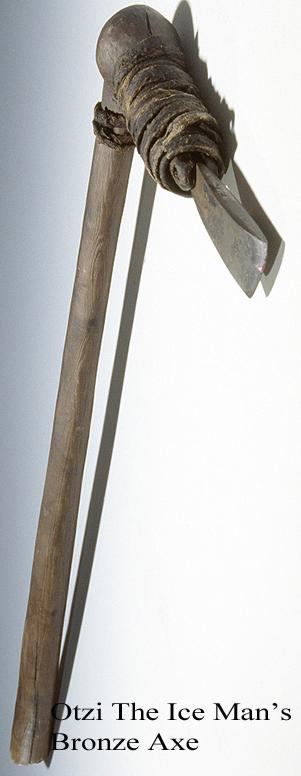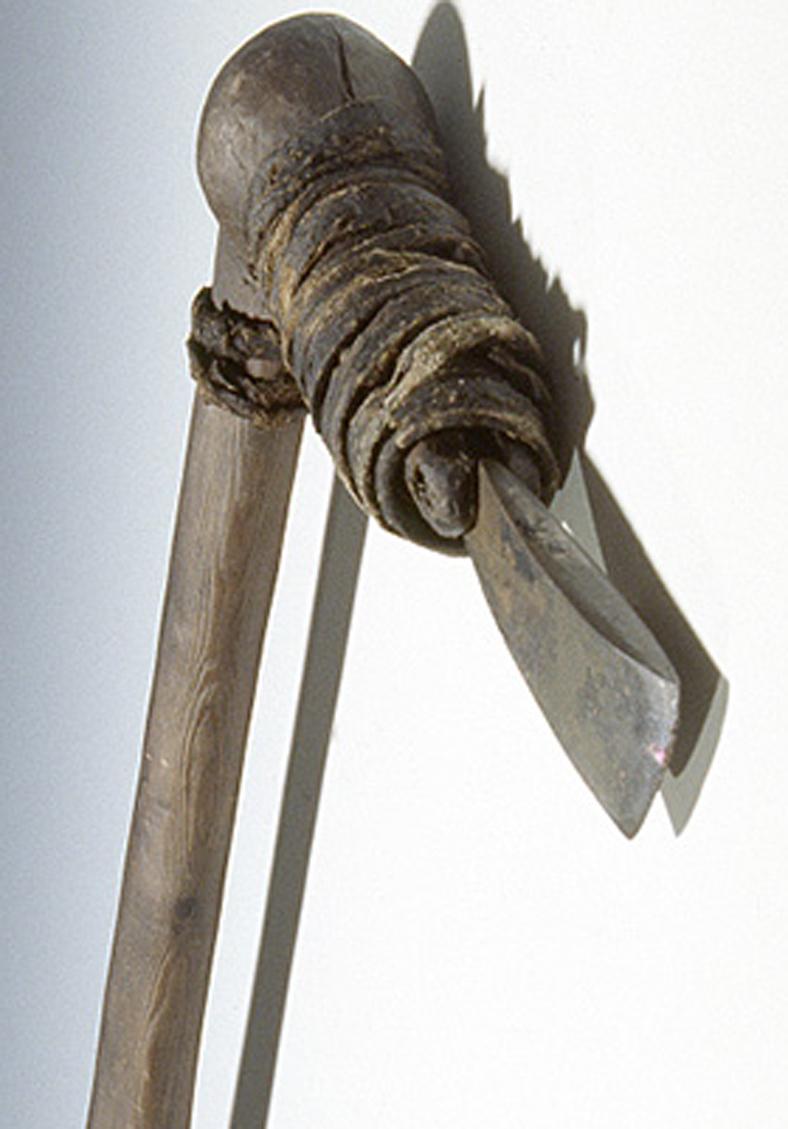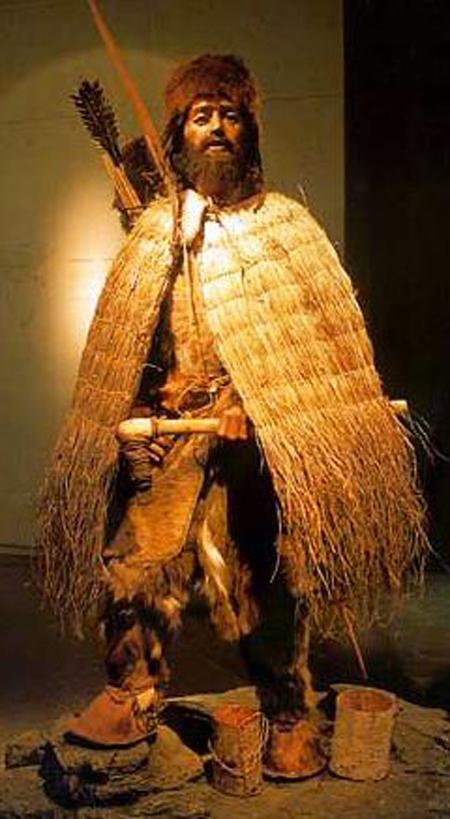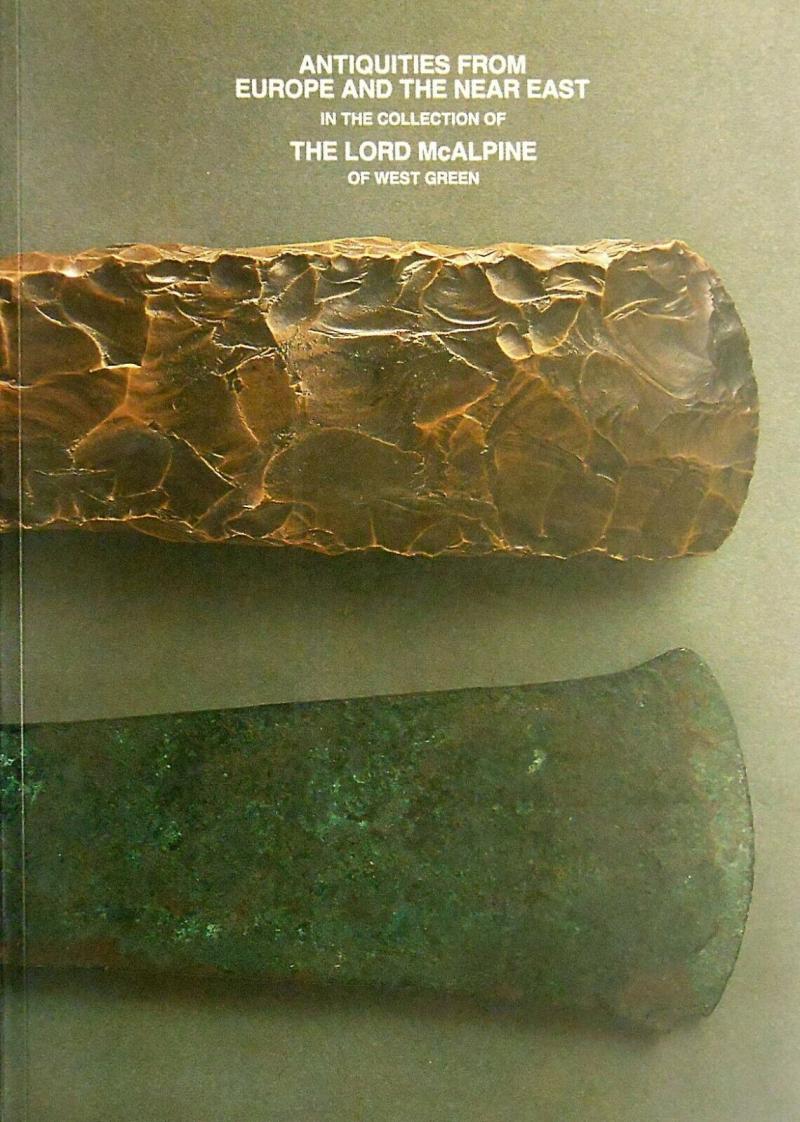An Original Ancient Briton, Pre-History, Bronze Age Axe Head, Loop and Socket Form, Formerly From the Sir Alfred McAlpine Collection. 3500 to 4,000 Years Old
A bronze age axe head with square, collared socket and rectangular cheeks with flared, D-section cutting edge, small loop to attach the axe head with sinew cord binding to an axe haft.
Likely recovered from a Bronze age barrow many decades past, formerly in the Sir Alfred McAlpine collection.
A Barrow is an ancient mound where treasure and artifacts were buried with warriors as offerings. There are many ancient Iron Age and Bronze age Barrows covering Britain's ancient lands, some are simple mounds other are long or shaped. However, artifacts and treasure from most of these sights are now long since gone, or, possibly, some remain but are too deep to disturb the precious site, so wonderful finds such as this are a rare joy to see and even rarer to own.
We show another similar, earlier bronze age axe head axe found with Otzi the Ice Man, and a recreation of him in the museum holding his similar axe. We show a photo of his original axe.
The Iceman was discovered in the Otztal Alps in the fall of 1991, the location giving him his now famous name: Otzi. His preserved body and equipment have given us a wealth of information about the time in which he lived.
He died and was buried within glacial ice 5,300 years ago, alone and in pain, yet the remains of his body and equipment are teaching us more than any previous discovery about that time in history when our ancestors were moving out of the stone age and into the age of metal.
He was prepared for his trek through the Tyrolean Alps as well as any modern climber, knowing the dangers of sudden snowstorms that can occur in the spring of the year. He did die, but it was not the weather or the mountains that killed him. It was an arrow shot into his left shoulder that shattered his scapula and tore through blood vessels and nerves. Although he escaped his attacker, the combination of blood loss and the immobility of his left arm had doomed his chances of surviving.
His pain must have been great as he kept climbing, finally stopping at an altitude of 10,400 ft. He slipped his quiver over his shoulder and dropped it to the ground. Staggering a few more yards, he removed his pack frame and laid it down against a stone outcropping. Using only his right arm, he carefully removed two birchbark containers from his pack, one he set on top of the rock, the other he kept close to him, a familiar smell momentarily comforting him. He then placed his copper axe and his bow stave with the pack. Clutching his birchbark cylinder, he struggled a few more steps before he stumbled, but even then, twisting to avoid landing on his left side and protecting the treasure in the container. He painfully pulled the birch bark close to his face, inhaled the last vestiges of the smoke from the failing ember inside and died.
The axe head weighs just under 200 grams, around 3 1/2". Fine condition.
Code: 24099
995.00 GBP


